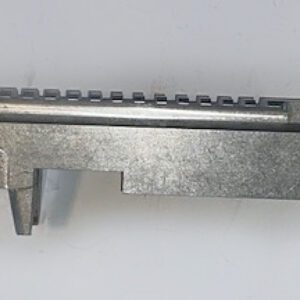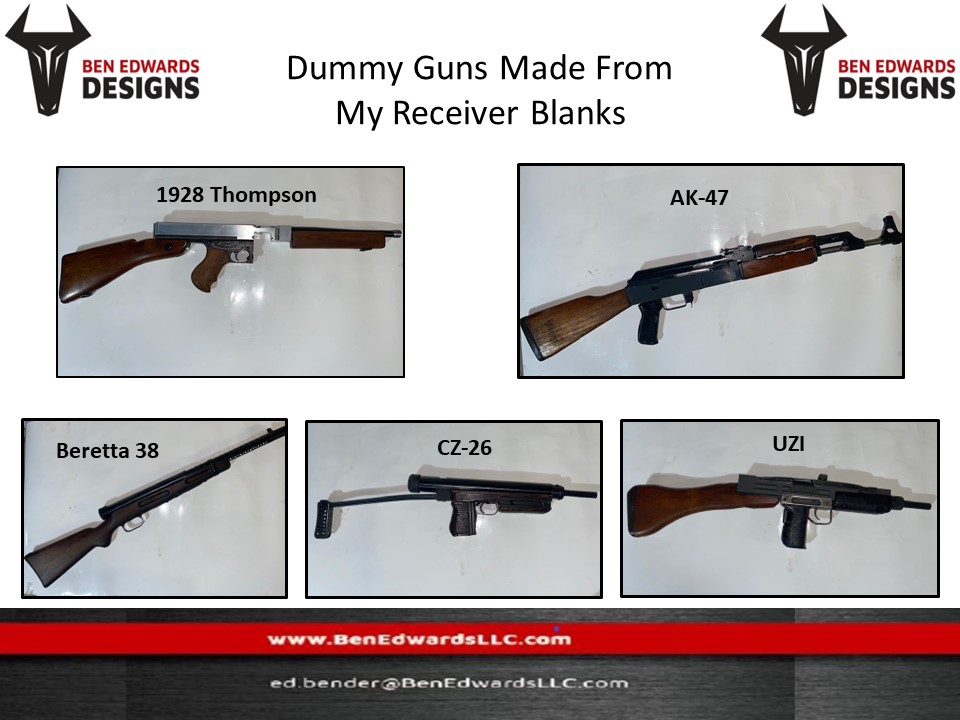Description
Made from 16 Gauge mild steel (.0625”) to original specifications, this type of flats is what Enfield started out with during wartime manufacturing.
NO FFL or paperwork is required.
Ben Edwards Designs Product Catalog
Background
The STEN (or Sten gun) is a family of British submachine guns chambered in 9×19mm which were used extensively by British and Commonwealth forces throughout World War II and the Korean War. They had a simple design and very low production cost, making them effective insurgency weapons for resistance groups, and they continue to see usage to this day by irregular military forces. The Sten served as the basis for the Sterling submachine gun, which replaced the Sten in British service until the 1990s, when it, and all other submachine guns, were replaced by the SA80.
The Sten is a select fire, blowback-operated weapon which mounts its magazine on the left. Sten is an acronym, from the names of the weapon’s chief designers, Major Reginald V. Shepherd and Harold J. Turpin, and “En” for the Enfield factory. Over four million Stens in various versions were made in the 1940s, making it the second most produced submachine gun of the Second World War, after the Soviet PPSh-41.
Technical Information
| Type | Submachine gun |
| Place of origin | United Kingdom |
| In service | 1941–1960s (United Kingdom) |
| 1941–present (Other countries) | |
| Designer | Major Reginald V. Shepherd |
| Harold J. Turpin | |
| Designed | 1940 |
| Manufacturer | Royal Small Arms Factory Enfield |
| BSA | |
| ROF Fazakerley | |
| ROF Maltby | |
| ROF Theale | |
| Berkshire | |
| Lines Brothers Ltd | |
| Long Branch Arsenal, Canada [a] | |
| Various underground resistance group factories | |
| Unit cost | £2 6s in 1942 |
| Produced | 1941– (version dependent) |
| No. built | 3.7–4.6 million (all variants, depending on source) |
| Variants | Mk. I, II, IIS, III, IV, V, VI |
| Specifications | |
| Mass | 3.2 kg (7.1 lb) (Mk. II) |
| Length | 762 mm (30.0 in) |
| Barrel length | 196 mm (7.7 in) |
| Cartridge | 9×19mm Parabellum |
| Action | Blowback-operated, open bolt |
| Rate of fire | version dependent; ~500–600 round/min |
| Muzzle velocity | 365 m/s (1,198 ft/s) 305 m/s (1,001 ft/s) (suppressed models) |
| Effective firing range | 100 m |
| Feed system | 32-round detachable box magazine |
| Sights | fixed peep rear, post front |
Design
After the Mark II, this was the most produced variant of the Sten, manufactured in Canada alongside the United Kingdom, with Lines Bros Ltd being the largest producer. The Mark III was made of 48 parts, compared to the Mark II’s 69, but the Mark II remained more commonplace for logistical reasons – parts between the two were not interchangeable. Though slightly lighter, the magazine well was fixed in place, and the barrel could not be removed, meaning if it was damaged the weapon had to be scrapped. Combined with the fact the Mark III was more prone to failure than the Mark II, production of the weapon ceased in September 1943. Unlike the Mark II, the receiver, ejection port, and barrel shroud were unified, leading to them being extended further up the barrel. Captured Sten Mk III’s in German possession were designated MP 750(e). A total of 876,886 Mark III’s were produced.






Reviews
There are no reviews yet.